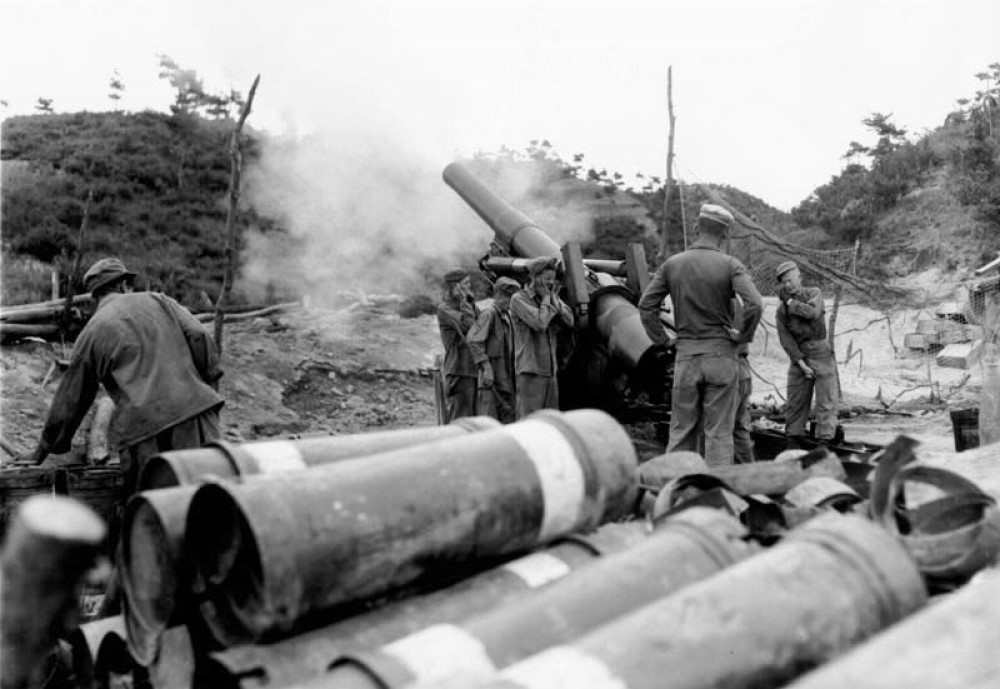Sailors, Sailors Everywhere and not a Berth to Sleep: The Illusion of Forward Posture in the Western Pacific
Graham Jenkins
...in their article, “
The State of (Deterrence by) Denial,” Elbridge Colby and Walter Slocombe propose to buy many more boxes of real-life military forces while disregarding where exactly they might fit. The authors are the latest to sign onto the illusory prospect of a large-scale forward positioning of U.S. forces, particularly land-based missiles, in the Western Pacific. They add their voices to a years-long chorus of commentators who insist that only by “strengthen[ing] its Western Pacific forward posture” and stationing vast numbers of manpower and materiel in-theater — proving the ability to resist “Chinese aggression” — will any degree of deterrence be secured. But the very idea of “sufficient” foreign posture is an illusion: No additional countries in Asia (with the exception of tiny Palau) are interested in hosting U.S. troops at all, much less the quantity and type of forces for which Colby and Slocombe advocate. At the same time, merely increasing troop numbers at existing U.S. and partner bases would not meaningfully alter the strategic calculus, and new weapons systems like theater missiles are particularly unlikely to be welcomed with open arms...
The fact remains that, except for Palau, no additional country will agree to host large numbers of U.S. troops or any ground-based precision strike assets at all, even on an ad hoc basis. This has persistently been the refrain of many who
opposed the U.S. withdrawal from the Intermediate Nuclear Forces Treaty and the development of
these types of missile capabilities. Even though China may have a significant advantage in the number of, specifically, land-based short-, medium-, and intermediate-range ballistic missiles, it does not logically follow that the United States or its allies should therefore field those precise weapons as well. Clearly it has not been the presence of such weapons that has deterred China from an invasion of Taiwan for the past 30 years.
There are plenty of alternatives to a massive forward presence in order to contribute to regional security without destabilizing the strategic situation. For the reasons above, land-based precision strike may well be a nonstarter. As the head of Air Force Global Strike Command
recently said of the Army’s multi-domain transformation concept, “Honestly I think it’s stupid … I just think it’s a stupid idea to go and invest that kind of money that recreates something that the [Air Force] has mastered and that we’re doing already right now. Why in the world would you try that?” With significant investments already underway in the realm of survivable precision strike, both with aircraft as well as extended-range air- and sea-launched munitions, the need for an entirely new capability without a logical home seems a stretch.
Likewise, focusing on land-based missiles ignores the assets already available to the United States. There is a reason the Tomahawk land-attack missile has been one of the
most used munitions since the end of the Cold War. Sea-based assets hold the promise of mustering massive amounts of distributed firepower in international waters, and, with the current surface fleet
aging and ailing, an imminent push to recapitalize is underway. This presents an opportunity to reconceive of the nature and purpose of modern naval platforms, and to look at even longer-range capabilities that would allow the Navy to play a part in a conventional seaborne deterrent strategy without having to risk forward-deploying huge numbers of ships. It is worth considering whether the guided-missile submarines converted from Ohio-class nuclear missile subs could serve as a possible template for a future platform. Given that their “replacement,” the Virginia-class attack submarines with the Virginia payload module, has only about
a third of the capacity, a true purpose-built successor guided-missile submarine could perform the same mission at a fraction of the cost. As it is, to replicate the current combined Tomahawk total of 616 missiles across four guided-missile submarines, it would require no less than 22 Virginias with the Virginia payload module, at a total cost premium of $8.8 billion over models without it. A limited magazine size in the Virginia payload module also means that missiles would run out sooner and that underway replenishment missions would be executed across a much greater area. But a dedicated guided-missile submarine would offer survivability, capacity, and, most importantly, it would not require basing or access rights. Disaggregated surface ship capabilities — for instance, a number of vertical launch tubes operating as an unmanned swarm in a joint command-and-control network — would provide similar strike potential in an even more survivable and less expensive form.
Finally, even if war did break out in the Western Pacific, the United States should challenge Beijing in areas outside of merely the military domain and the First Island Chain. Washington has many
economic levers and tools to punish military aggression without resorting to direct violence: Sanctions and embargoes can be applied. Likewise, even with America’s overseas reputation
greatly diminished after
decades of war and unilateralism, it still has valuable political currency with allies and international organizations alike. Laying the groundwork in those fora now — as a means of reestablishing a moral high ground — would enable a broader coalition to apply its own diplomatic and economic pressures to China. Unlike the idea of responding to adversary missiles simply by developing missiles of one’s own, this approach would be asymmetric. Finding alternatives to force-on-force clashes would play to America’s strengths by working with its considerable number of allies and partners, leveraging its existing naval power, and decreasing the risk that a crisis could turn into a great-power war.
Conclusion
Despite fears of an overly small military presence, the United States is
already redeploying forces from Europe and the Middle East to existing bases around the Western Pacific. These bases are in allied countries that have already welcomed large concentrations of U.S. military forces and have no objection to a few more. The region has been at relative peace since the end of the Sino-Vietnamese War in 1979, with no major interstate wars (unless one counts the intervention in East Timor in the 1990s). Even with the end of the Cold War and ensuing force reductions, the U.S. force posture in the Western Pacific has actually increased over time, providing a steady and continuous presence.
Is that sufficient for deterrent purposes? It clearly has been so far. One doubts whether reintroducing the permanent presence of U.S. airpower at Clark Air Base in the Philippines or a triumphant return by the Navy to Subic Bay would make the difference in a war for Taiwan. In short, given the unpredictability of security partners and even treaty allies at providing the barest wartime support, proposing to position significantly more U.S. forces in the region runs up against an unmistakable reality: There is nowhere to put them. The geopolitical realities of the Western Pacific mean that, as much as some American commentators might wish for a stronger U.S. forward presence there, without greatly expanded basing and access rights, they are simply that: wishes. And yet, if there is no way to win the “blunt” phase of the
National Defense Strategy given the current footprint in the region, then what correlation of forces would actually allow that? While an alarmed chorus insists that more is needed, they do not even ask, much less answer, the question of “how much is enough?” Is it simply “as many missiles as China has” — or is it possible that the question itself is the issue?
The problem lies not with the quantity of forward-deployed resources so much as with the strategic assumptions underpinning their requirement. Rather than proclaiming the need to flood the zone with tremendous amounts of equipment and end strength and then having nowhere to put them, the United States is better off developing naval platforms like submarines and unmanned surface and underwater vehicles that would provide precision strike capabilities without requiring overseas basing. Additionally, the United States should enable its partners and allies to defend themselves if need be, whether that means selling them the very weapons systems they would rather not see on their territory under U.S. control or simply conducting the necessary bilateral work to ensure U.S. wartime access. Such a restrained posture is one of neither abandonment nor appeasement — it is recognizing the limits of the possible and tailoring a strategy to support and defend the U.S. partners that make the region one worth caring about.
Graham W. Jenkins is a senior principal analyst in Northrop Grumman’s Aeronautics Sector and a young leader with the Pacific Forum. He was previously a contractor for the Office of the Under Secretary of Defense for Intelligence and a research assistant at the Institute for Defense Analysis. All views are his own and do not reflect those of his employers, customers, or the U.S. government.
It’s a problem familiar to any wargamer: Sure, you can buy more and more boxes of soldiers and tanks and missiles, but, eventually, you run out of places
warontherocks.com
Mark
Ottawa


www.theguardian.com














